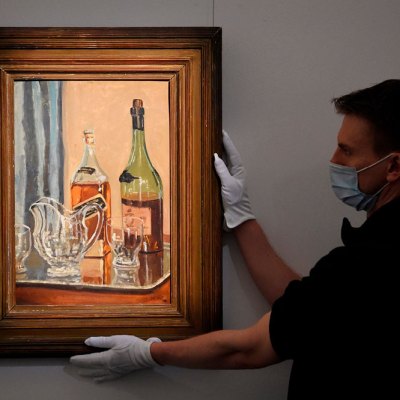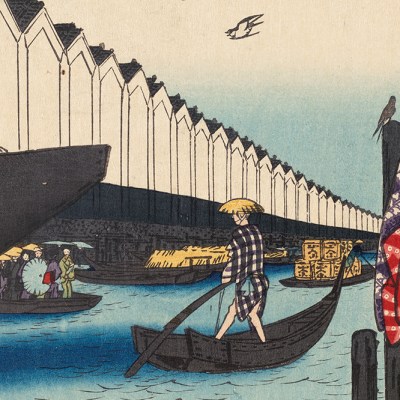From the November 2025 issue of Apollo. Preview and subscribe here.
Great whisky is about patience; every dram is the result of numerous decisions. There are seven essential stages to the process. First, the barley is malted and milled to free the starches. Second, mashing, where hot water breaks down the starch into sugars. Third, fermentation in washbacks, in which yeast turns those sugars into a liquid called wash. Next comes distillation in copper pots, before maturation in casks. Then, for blended whiskies, there is marrying, where the maker mixes the liquid from several vessels to create a final product. Last, the whisky is reduced, filtered and bottled.
Japanese makers adapted and refined this method in the first half of the 20th century. Commercial whisky production in Japan began in 1923 when Shinjiro Torii opened what is now the Yamazaki distillery. He hired a young chemist who had trained in Scotland, Masataka Taketsuru, to establish the distillation programme. Taketsuru – now known as the founder of Japan’s whisky industry – invented a method that fused Scottish technique with Japanese precision. When he founded his own distillery in 1934, he chose to build it in the town of Yoichi because it reminded him of Scotland.
The result is a tradition defined by balance and meticulous attention to raw materials. The use of native mizunara oak and the seasonal variations in Japan’s climate produce unmistakably local notes, such as sandalwood, incense and coconut. But if Japanese whisky demonstrates how a tradition born thousands of miles away can be translated and recast into something new, the Scottish distillery Glenrothes, founded in 1879, has taken inspiration from Japanese ceremony and ritual for its latest product, The 51. This blend is drawn from two oak casks: one has the soft perfumed character of the wild orchids that bloom on the estate; the other has a depth and richness that comes from the soft water from the distillery spring and long ageing in sherry casks. Aged for 51 years and priced at £37,000, The 51 is complex and vibrant: its tasting notes include succulent watermelon, the scent of fresh peach kernels and almonds, notes of rose oil, bergamot and black tea leaves, with base notes of sandalwood and a creamy almond finish. Master whisky maker Laura Rampling believes that the project is ‘a testament to those rare moments in whisky making when patience, nature and craft align perfectly’.

The 51 is encased in a solid Jesmonite column that the owner must shatter with a hammer to access the hand-blown decanter. The shards are returned to the distillery to be repaired by five artists and craftspeople: Yuko Gunji, Kira Smith, Joseph and Maiko Anderson-Story, Chiara Lorenzetti and Iku Nishikawa, all of whom are trained in kintsugi, the art of repairing broken pottery with urushi (lacquer) dusted with powdered gold. The technique, which has roots in Japanese tea ceremonies, treats an object’s fractures as part of its story, rather than flaws to be hidden; here, the fragments are repaired with precious metal and repurposed into a vase for orchids.
Given the whisky’s rarity – only 100 bottles are available – it is unlikely that collectors would be inclined to hide it away. Nonetheless, according to Jonny Fowle, global head of whisky at Sotheby’s, ‘Unlike wine, whisky can be stored on collectors’ shelves in their homes’ rather than in professional storage, ‘meaning that whisky lends itself to extravagant display more readily than other similar products’. ‘There are certain whiskies,’ he says, ‘which cross over […] to being works of art in themselves.’
The relationship between breaking and mending perhaps protects against straightforward commodification. The 51 requires the collector to participate in the steps of experiencing the drink by smashing, returning and receiving a ‘new’ repaired piece. In doing so, the bottle becomes a portal, a conversation between maker and owner about patience, imperfection and attention. And just like a tea ceremony, it requires the user’s participation to activate the ritual.
Both Japanese and Scottish traditions reward the temperament of slowness and attention to taste. Be it the careful cut of a pot still, the long patience of a cask, or the mindful rejoining of broken shards with gold, good whisky and good craft ask you to taste and wait. The 51 is an extravagant reminder of that lesson – a dram that is at once product and provocation, a bottle that insists the collector be mindful of the making as well as the owning.
From the November 2025 issue of Apollo. Preview and subscribe here.


